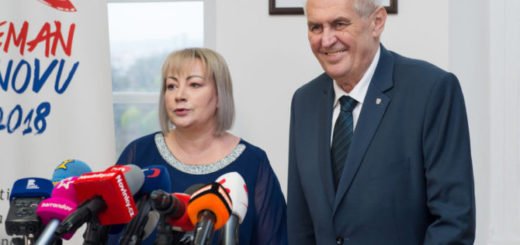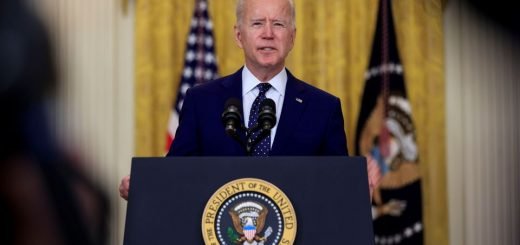Indian Army Helping Cambodian Army in Demining Millions of Landmine
In the memoir of the wars, Cambodia is widely cited for a unique reason, as one of the most landmine-impacted countries in the world.
It is believed that millions of mines were planted during the era of conflicts in the Indo-China region, reportedly with tens of thousands of casualties documented since the 1980s. The United Nations assisted the Cambodian government, by appealing to several individual countries and international and local organizations to get Cambodia rid of the landmines and develop a demining strategy as their key priority in their support of the land of Angkor Wat.
Since the Korean war, India has been proactive in assisting the world and the United Nations. India has already made contributions to demining work in several countries, including Angola, Mozambique & Somalia.
As Cambodian Foreign Ministry has always stressed and applauded India as one of the original contributors to the United Nations demining operations in Cambodia.
India’s quick response to this was widely circulated in the Cambodian as well as Chinese media stating “The Cambodian minister highly valued the decision of the Indian government to provide 15 mine-sniffing dogs (to Cambodia) and to train 15 Cambodian employees to control the dogs”.
When we talk about the Indian Culture, we can count on the entire world as the heritage of the Indians is spread throughout, We can also say that the incredible land of India helped the world enlighten, whether we talk about the number 0 (Zero) or the peaceful thoughts of Buddha or Gandhi. Also, we can count on the entire world with the Indian Influence whether the Indian-origin leaders of Mauritius or Guayana or Ireland or the Indian diaspora in the world are the talk of the world in both ways.
One of the places in this world where we could count on both, Cambodia is a country located in the southern portion of the Indo-china Peninsula in Southeast Asia who are predominantly Buddhist but retain a strong influence on Hindu rituals, idolatry and mythology. The pervading influence of Hinduism, Buddhism and Indian architecture are borne out by the magnificent structures at Angkor Wat, Angkor Thom, Bayon, Ta Phrom and other religious and historical sites in Cambodia.
Sharing the Indian roots for the last 2000 years, during the Cholas or the rule of Kalinga, the Rajas were attached with trade and cultural connections.
After that, there has been a huge gap of a few hundred years, Cambodia went off the radar of India, both India & Cambodia were colonies ruled by the British and French respectively when got independence there was a rush to catch the bus of development which had missed by both in the era of ‘Inglorious Empire’.

A Buddhist monk walks through the ruins of Angkor Wat, Cambodia
They got Independence in 1956 from French rule, after you trace Cambodian history in the 60s and 70s, during the Vietnam war there was huge turbulence in the country they witnessed an era of horrible war and destruction. The strife was both internal and external, marked by civil war, being an innocent bystander in the Vietnam War, genocide and famine, and international war with Vietnam. At that time, India played a very positive role and became the first non-communist country to recognise the Cambodian government in the UN and outside, resulting in a good bond of friendship, between the two states and also in person with the Cambodian PM and their Indian counterparts and even by today the Cambodian government recognises and acknowledge the role of Indian help and support which was much political in nature rather than economic at the time of the crisis when Cambodia was alienated to the world apart from the communist countries.
That has been a very important foundation apart from the thousand years of bonding of old civilisation and culture between India and Cambodia because much of the cultural things in Cambodia reflect the Indian culture, which is the language, the Devanagari script & lifestyle, showing the bond of centuries. Unfortunately, the same heritage bond of friendship was not supplemented in the economic engagement, even for now, due to various reasons India’s economic interest is not much seen in Cambodia due to its comparatively small size & market, a distance of thousands of miles also limit the Indian activeness in the region.
Moreover, New Delhi’s major interest could be seen in the neighbourhood, big powers or in countries where a large chunk of the Indian diaspora is living
Despite this fact having not much close relation, India finds itself always politically connected to Cambodia. On the ground under limited resources, India is helping Cambodia, under various schemes, one of them is the Mekong Ganga scheme (MGS), for which India sponsors a lot of scholarships for Cambodian students to study in India.
Indian assistance as soft loans to Cambodia in developing their infrastructure, which includes dams, and transmission lines are applauded by the Cambodian masses.
The Archaeological Survey of India was very helpful and played a proactive role in the restoration of Angkor Wat in Cambodia, during the war years, no one else does get indulged into the
War-torn zone for any restoration work, marking itself as an early friend of Cambodia.
India through the Act East Policy, showing major efforts in Cambodia, as Cambodian Development is gaining momentum. One of the reasons can also include China’s power politics among the south-east Asian countries, China is influencing Cambodia as a big brother, while making a huge investment China tried bringing Phenom Phen much closer to the Chinese leadership, also if we look at the fact that major chunk of the Cambodian population is of Chinese origin, which also contributed much is strengthening the bond between the Asian giant and emerging Indo-Chinese region on the wider scale.
Though India and Cambodia share the common values of Buddha, several Cambodian monasteries are in India representing the shared historical roots which influenced 98% of the Cambodian masses, old monks from Cambodia could be easily seen travelling to Bodh Gaya in the winters, making a sense of India as a very special place in their hearts. Our government could take out leaflets from this less noticed cultural part of India, to promote the Buddha circuit more in the Eastern Neighbourhood, it would work as a holy grail in Act East Policy.
Even after 60 years of Diplomatic relations, very fewer people knew about Cambodia, and many of them would’ve known only because of Angkor Wat. Indians need more to know about this beautiful nation in South Asia, its booming economy, in textile, agriculture and tourism. There are vast possibilities which could make India-Cambodia relations grow and nurture. Creating some deep bonds between individuals could help and encourage the masses to promote trade and tourism between each other.
There is hope after knowing much about Cambodia, Indian travellers could add this place to their itinerary while travelling to Thailand, Phuket or Malaysian tour. In fact, they could think of Vietnam too, which also has tremendous potential, full of Indian heritage, fantastic temples and great architectural and historical values.
Nourishing relations at the individual level among both countries could be one of the most awesome things, written in the tale of India’s success and development, this relation has many things to offer to the abolishment of social problems for the youths of both countries who are facing, unemployment as a major challenge to their growth.
Individual-level contact with Cambodia will bring close ties, and a huge cultural exchange could be felt with the respect and friendliness of Cambodians towards Indians.
There is no competition between India and China for Cambodia, but if we see with the lenses of efforts, then China is doing pretty well in Cambodia, and India need not compete China there, but to find closer ties for the development of the entire Asiatic region.”




















